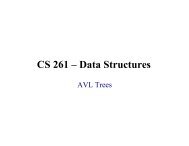Assignment #3 Metal Casting IE 337 Manufacturing Material - Classes
Assignment #3 Metal Casting IE 337 Manufacturing Material - Classes
Assignment #3 Metal Casting IE 337 Manufacturing Material - Classes
You also want an ePaper? Increase the reach of your titles
YUMPU automatically turns print PDFs into web optimized ePapers that Google loves.
11.6 Which of the following casting processes are expendable mold operations (four correct answers): (a)<br />
centrifugal casting, (b) die casting, (c) investment casting, (d) low pressure casting, (e) sand casting, (f)<br />
shell molding, (g) slush casting, and (h) vacuum molding?<br />
Answer. (c), (e), (f), and (h).<br />
11.10 Which of the following qualifies as a precision casting process (two correct answers): (a) ingot<br />
casting, (b) investment casting, (c) plaster mold casting, (d) sand casting, and (c) shell molding?<br />
Answer. (b) and (c).<br />
11.11 Which of the following casting processes are permanent mold operations (three correct answers):<br />
(a) centrifugal casting, (b) die casting, (c) expanded polystyrene process, (d) sand casting, (e) shell<br />
molding, (f) slush casting, and (g) vacuum molding.<br />
Answer. (a), (b), and (f).<br />
11.12 Which of the following metals would typically be used in die casting (three best answers): (a)<br />
aluminum, (b) cast iron, (c) steel, (d) tin, (e) tungsten, and (f) zinc?<br />
Answer. (a), (d), and (f).<br />
11.13 Which of the following are advantages of die casting over sand casting (four best answers): (a)<br />
better surface finish, (b) closer tolerances, (c) higher melting temperature metals, (d) higher production<br />
rates, (e) larger parts can be cast, and (f) mold can be reused?<br />
Answer. (a), (b), (d), and (f).<br />
Problems<br />
6.3 Using the lead-tin phase diagram in Figure 6.3, determine the liquid and solid phase compositions for<br />
a nominal composition of 40% Sn and 60% Pb at 204°C (400°F).<br />
Solution: From Fig 6.3, the compositions are observed as follows:<br />
Liquid phase composition = 56% Sn - 44% Pb.<br />
α phase composition = 18% Sn - 82% Pb.<br />
NOTE TO GRADER: Please realize that these values are taken from a graph so some leniency<br />
warranted.<br />
6.4 For the preceding problem, use the inverse lever rule to determine the proportions of liquid and solid<br />
phases present in the alloy.<br />
Solution: From Fig 6.3, measured values of CL and CS are: CL = 10.5 mm, CS = 15 mm.<br />
Liquid phase proportion = 15/(15 + 10.5) = 15/25.5 = 0.59<br />
α phase proportion = 10.5/25.5 = 0.41

















